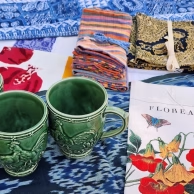 Sat./Sun. Nov. 8 & 9
Sat./Sun. Nov. 8 & 9
9:30am to 3:00 pm
Not to be Missed!
Find artisan jewelry, stylish shoes, clothing and accessories, local artisan and other special art and craft pieces, antiques, linens, kitchen stuff, CDs, books.
You never know what you’ll discover from Eve’s personal collection! Eve has spent her life as a treasure hunter, seeking beauty, quality, authenticity and value, in every realm, from experiences to plants to art to earrings! Bring your friends!
CASH ONLY![Read More]

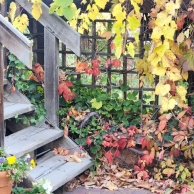 I confess. I am definitely a plant hoarder. Every year, I amass a formidable collection of plant starts, and then spend evenings through the season walking around my garden, little pots in hand, trying to find a few square inches where I can fit them in. Then I make tags and put them in the spots I’ve found (or created by taking some other plant out). If the critters don’t pull them out, most of those tags wait months for the magical moment when the weather is mild enough for me to plant them – October at last!
I confess. I am definitely a plant hoarder. Every year, I amass a formidable collection of plant starts, and then spend evenings through the season walking around my garden, little pots in hand, trying to find a few square inches where I can fit them in. Then I make tags and put them in the spots I’ve found (or created by taking some other plant out). If the critters don’t pull them out, most of those tags wait months for the magical moment when the weather is mild enough for me to plant them – October at last!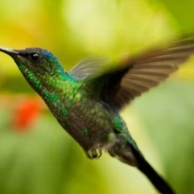 All summer and fall, Mikl and I have been collecting seeds from our own gardens and from wildlands where we have collecting permits, and at this point, most of that collecting is done. After spending last Sunday cataloging our seed collections, I’m delighted to report that so far, we have collected at least 85 species, most of them local natives. We can’t sell you the seeds we collect (the USDA won’t allow it), and besides, we need them for growing our plants for you. But we have excellent wildflower seed mixes from BBB Seeds in Boulder.
All summer and fall, Mikl and I have been collecting seeds from our own gardens and from wildlands where we have collecting permits, and at this point, most of that collecting is done. After spending last Sunday cataloging our seed collections, I’m delighted to report that so far, we have collected at least 85 species, most of them local natives. We can’t sell you the seeds we collect (the USDA won’t allow it), and besides, we need them for growing our plants for you. But we have excellent wildflower seed mixes from BBB Seeds in Boulder.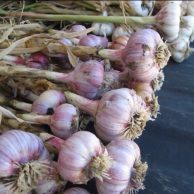 I’ve been shopping at my local Farmers Market on Saturday mornings, and have been really impressed with some of the gorgeous, large vegetables some of my favorite farms have grown this year. Most notable were the huge fennel bulbs and the stunning, large, firm heads of purple radicchio. But the garlic bulbs I found at the market have been, to be blunt, puny. And most are sold without variety names. Some were not properly cured. Small bulbs with small cloves are just fine for use in the kitchen for the next 3 to 5 months, but they are not suitable for planting.
I’ve been shopping at my local Farmers Market on Saturday mornings, and have been really impressed with some of the gorgeous, large vegetables some of my favorite farms have grown this year. Most notable were the huge fennel bulbs and the stunning, large, firm heads of purple radicchio. But the garlic bulbs I found at the market have been, to be blunt, puny. And most are sold without variety names. Some were not properly cured. Small bulbs with small cloves are just fine for use in the kitchen for the next 3 to 5 months, but they are not suitable for planting. 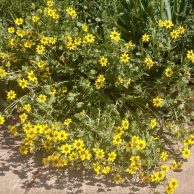


 By Eve Reshetnik Brawner
By Eve Reshetnik Brawner
 I recently attended a public conversation on the subject of ‘Avant Gardening’ at the Longmont Museum. Host Emily Maeda, co-owner of Tree of Life Landscaping, conversed with accomplished front range horticulturists and landscape designers Bryan Fischer and Kevin Phillip Williams about what constitutes the current avant-garde in gardening. I didn’t really feel that their discussion was conclusive, but the question has been in my thoughts. I now realize that in my mind, the definitive answer is habitat gardening.
I recently attended a public conversation on the subject of ‘Avant Gardening’ at the Longmont Museum. Host Emily Maeda, co-owner of Tree of Life Landscaping, conversed with accomplished front range horticulturists and landscape designers Bryan Fischer and Kevin Phillip Williams about what constitutes the current avant-garde in gardening. I didn’t really feel that their discussion was conclusive, but the question has been in my thoughts. I now realize that in my mind, the definitive answer is habitat gardening. We are grateful to have one day to acknowledge the value of the Earth. Wendell Berry said, “Earth is what we all have in common.” Pope Francis said we all have a shared responsibility for protecting the Earth, our common home, and he urged us to care for the environment. It’s pretty obvious, isn’t it?
We are grateful to have one day to acknowledge the value of the Earth. Wendell Berry said, “Earth is what we all have in common.” Pope Francis said we all have a shared responsibility for protecting the Earth, our common home, and he urged us to care for the environment. It’s pretty obvious, isn’t it?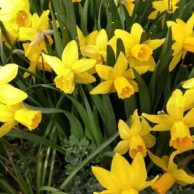


 Welcome to Harlequin’s Gardens’ 33rd year! We care about your gardening success, your health, and our planet. We have spent the winter planning, planting, ordering, cleaning, repairing and getting ready to host you, and we have seeds, seed-starting supplies, gardening tools, books, soils and soil-nourishing amendments, and a great line-up of empowering classes!
Welcome to Harlequin’s Gardens’ 33rd year! We care about your gardening success, your health, and our planet. We have spent the winter planning, planting, ordering, cleaning, repairing and getting ready to host you, and we have seeds, seed-starting supplies, gardening tools, books, soils and soil-nourishing amendments, and a great line-up of empowering classes!




 Fire is on our minds. How to prevent it. How to curtail or control it. How to live with it. How to use it constructively. We remember the early winter Marshall Fire at the end of 2021 with feelings of grief and
Fire is on our minds. How to prevent it. How to curtail or control it. How to live with it. How to use it constructively. We remember the early winter Marshall Fire at the end of 2021 with feelings of grief and Time flies, don’t you think? Do you remember when people throughout the “developed world” anxiously awaited the arrival of the new millennium, worried by predictions that Y2K would bring a collapse of technical systems – the internet, banking, stock trading, communications – and throw everything else into chaos? And there was nothing we could do about it? It didn’t take long to see that the world as we knew it did not fall apart. Twenty-five years later, perhaps you’ve been nervously awaiting the advent of 2025 and are scared of what the new year, on many fronts, could bring. Completely understandable!
Time flies, don’t you think? Do you remember when people throughout the “developed world” anxiously awaited the arrival of the new millennium, worried by predictions that Y2K would bring a collapse of technical systems – the internet, banking, stock trading, communications – and throw everything else into chaos? And there was nothing we could do about it? It didn’t take long to see that the world as we knew it did not fall apart. Twenty-five years later, perhaps you’ve been nervously awaiting the advent of 2025 and are scared of what the new year, on many fronts, could bring. Completely understandable!
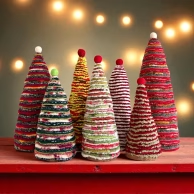 Here we are in the season of giving generously. Not all of us can afford to give lavishly, but even the humble gift of seeds can create enormous abundance. We’re talking about both literal and figurative seeds here.
Here we are in the season of giving generously. Not all of us can afford to give lavishly, but even the humble gift of seeds can create enormous abundance. We’re talking about both literal and figurative seeds here. The more challenging life becomes, the more I remind myself of what’s good and beautiful and wondrous and nourishing in life, what I can be deeply grateful for and what I will stick my neck out to protect. The list is long!
The more challenging life becomes, the more I remind myself of what’s good and beautiful and wondrous and nourishing in life, what I can be deeply grateful for and what I will stick my neck out to protect. The list is long! Eve’s “Embarrassment of Riches” Garage Sale Is Delayed
Eve’s “Embarrassment of Riches” Garage Sale Is Delayed
 At this time of year, many of you probably share with me the bittersweet feeling of closure drawing near. It’s been another immensely rewarding growing season at Harlequin’s, and we are so grateful to have had the opportunity to introduce hundreds of new Colorado gardeners to appropriate and successful materials and methods, as well as helping so many longtime, like-minded sustainable gardeners. For 32 years we have been providing pollinator-safe Colorado-appropriate plants, products, information and advice based on our ongoing research and long experience, and we look forward to carrying this service well into the future. Thank you all for your support! But we’ve extended our season and we’re not done yet!
At this time of year, many of you probably share with me the bittersweet feeling of closure drawing near. It’s been another immensely rewarding growing season at Harlequin’s, and we are so grateful to have had the opportunity to introduce hundreds of new Colorado gardeners to appropriate and successful materials and methods, as well as helping so many longtime, like-minded sustainable gardeners. For 32 years we have been providing pollinator-safe Colorado-appropriate plants, products, information and advice based on our ongoing research and long experience, and we look forward to carrying this service well into the future. Thank you all for your support! But we’ve extended our season and we’re not done yet! 

 I have a passion for seeds, for the elegant and endlessly diverse designs of their natural packaging, their fascinating distribution and germination strategies, and for the astonishing emergence of exuberant life from even the most minute speck of a seed. I once grew a Eucalyptus gunnii tree from seed the size of a dust mote. It grew, outdoors (in Eugene, Oregon) for several years, reaching 16’ tall until an unusually heavy snowstorm broke all the branches off. And in its native Tasmania it could have reached 135 feet! In addition to collecting seeds from plants in the wild and in my pollinator garden at home, I collect seeds at this time of year from my vegetable garden to enable Harlequin’s Gardens to offer unique and commercially unavailable varieties of tomatoes (“Anasazi”) and peppers (Lanterna Piccante), wild perennial arugula, and perennial Caucasian Spinach vine.
I have a passion for seeds, for the elegant and endlessly diverse designs of their natural packaging, their fascinating distribution and germination strategies, and for the astonishing emergence of exuberant life from even the most minute speck of a seed. I once grew a Eucalyptus gunnii tree from seed the size of a dust mote. It grew, outdoors (in Eugene, Oregon) for several years, reaching 16’ tall until an unusually heavy snowstorm broke all the branches off. And in its native Tasmania it could have reached 135 feet! In addition to collecting seeds from plants in the wild and in my pollinator garden at home, I collect seeds at this time of year from my vegetable garden to enable Harlequin’s Gardens to offer unique and commercially unavailable varieties of tomatoes (“Anasazi”) and peppers (Lanterna Piccante), wild perennial arugula, and perennial Caucasian Spinach vine.

 Sometimes we are running so fast that we forget to slow down and see what’s ready to come out for sale. This week we are happily surprised to see that we have fresh stock of lots of premium native shrubs that we grew in convenient, affordable 2-gallon pots. We’re making them available at regular price (not discounted for our fall sale) – read more below.
Sometimes we are running so fast that we forget to slow down and see what’s ready to come out for sale. This week we are happily surprised to see that we have fresh stock of lots of premium native shrubs that we grew in convenient, affordable 2-gallon pots. We’re making them available at regular price (not discounted for our fall sale) – read more below. One of the beautiful alternatives to a standard, water-thirsty, solid green, mowed Kentucky Bluegrass lawn is a naturalistic meadow composed of low-water clumping grasses and wildflowers.
One of the beautiful alternatives to a standard, water-thirsty, solid green, mowed Kentucky Bluegrass lawn is a naturalistic meadow composed of low-water clumping grasses and wildflowers. We cut, dig and store our dahlia tubers just after the first frost. Our friends at Arrowhead Dahlias have easy instructions.
We cut, dig and store our dahlia tubers just after the first frost. Our friends at Arrowhead Dahlias have easy instructions. We still have Lavender (Munstead, Buena Vista, Hidcote and Grosso), and if you want to plant them this season, get them this week on sale for 20% off! Any plants left after that will be potted up for next year. Because it is evergreen, newly planted lavender is more sensitive to hard frost than many other hardy perennials, so to give them a chance to establish before very cold weather arrives, plant them NOW. If you garden at an elevation higher than 6,000’, we recommend waiting to plant lavender next spring.
We still have Lavender (Munstead, Buena Vista, Hidcote and Grosso), and if you want to plant them this season, get them this week on sale for 20% off! Any plants left after that will be potted up for next year. Because it is evergreen, newly planted lavender is more sensitive to hard frost than many other hardy perennials, so to give them a chance to establish before very cold weather arrives, plant them NOW. If you garden at an elevation higher than 6,000’, we recommend waiting to plant lavender next spring.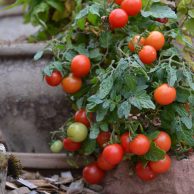
 A grove of Rocky Mountain Bee Plant, four to six feet tall, has grown up alongside my driveway, where I almost never water, and is now in its full glory. From dawn to dusk, the buzz of pollinators at work is intense; honeybees, bumblebees large, medium and small, plus sweat bees, hoverflies, little tiny bees and wasps, constantly trading places, collecting pollen and sipping nectar. Yesterday, as I made my way slowly and carefully past the grove to get to my car door, one of the abovementioned made a wrong turn and found herself between my capri pants and my thigh, and panicked. The sting was painful for a few minutes, no big deal, but may have been fatal for the unwitting trespasser.
A grove of Rocky Mountain Bee Plant, four to six feet tall, has grown up alongside my driveway, where I almost never water, and is now in its full glory. From dawn to dusk, the buzz of pollinators at work is intense; honeybees, bumblebees large, medium and small, plus sweat bees, hoverflies, little tiny bees and wasps, constantly trading places, collecting pollen and sipping nectar. Yesterday, as I made my way slowly and carefully past the grove to get to my car door, one of the abovementioned made a wrong turn and found herself between my capri pants and my thigh, and panicked. The sting was painful for a few minutes, no big deal, but may have been fatal for the unwitting trespasser.
 As a gardener and as a person with very limited heat tolerance, I am thrilled that the autumnal equinox is just a few weeks away! Late summer through November is my favorite and most successful time to plant nearly all types of perennials and woody plants. As heat, sun and evaporation are reduced, the new transplants can establish more quickly and with less stress. They don’t need as much water and shade, so in the fall I can plant in the most exposed, hot and challenging parts of my garden. And thank goodness, because I’ve got dozens of plants still in pots, waiting for gentler planting conditions. And at Harlequin’s, we have a steady stream of late ‘newcomers’ arriving on our tables – beautifully grown plants that are just now ready for sale – and on sale – so come take a look!
As a gardener and as a person with very limited heat tolerance, I am thrilled that the autumnal equinox is just a few weeks away! Late summer through November is my favorite and most successful time to plant nearly all types of perennials and woody plants. As heat, sun and evaporation are reduced, the new transplants can establish more quickly and with less stress. They don’t need as much water and shade, so in the fall I can plant in the most exposed, hot and challenging parts of my garden. And thank goodness, because I’ve got dozens of plants still in pots, waiting for gentler planting conditions. And at Harlequin’s, we have a steady stream of late ‘newcomers’ arriving on our tables – beautifully grown plants that are just now ready for sale – and on sale – so come take a look!
 It’s officially Summertime. We are struggling with an unprecedented June heat-wave and very low precipitation. But along with the heat, sun and lack of significant rainfall, there are some wonderful things happening that we can appreciate and be grateful for, like the bold, stand-out colors of summer blooms! Of the summer-blooming perennials we grow, both native and non-native, many are in bud or starting to bloom, are looking great and are ready now to bring out for sale. They ALL provide important sustenance for our pollinators, from tiny native bees, wasps and flies, to bumblebees, butterflies, and hummingbirds! And most are in 4” ‘deep pots’, easier to establish in the heat of the summer!
It’s officially Summertime. We are struggling with an unprecedented June heat-wave and very low precipitation. But along with the heat, sun and lack of significant rainfall, there are some wonderful things happening that we can appreciate and be grateful for, like the bold, stand-out colors of summer blooms! Of the summer-blooming perennials we grow, both native and non-native, many are in bud or starting to bloom, are looking great and are ready now to bring out for sale. They ALL provide important sustenance for our pollinators, from tiny native bees, wasps and flies, to bumblebees, butterflies, and hummingbirds! And most are in 4” ‘deep pots’, easier to establish in the heat of the summer! We’re celebrating all month, and we’d love to encourage you to support pollinators in your gardens.
We’re celebrating all month, and we’d love to encourage you to support pollinators in your gardens. 
 It’s not ideal, but sometimes you have to plant in the middle of a heatwave. Fortunately, it can be done successfully, even here in the high, windy and dry zone. High temperatures, wind and strong sunlight cause water to evaporate from plant leaves faster than the roots can take up water.
It’s not ideal, but sometimes you have to plant in the middle of a heatwave. Fortunately, it can be done successfully, even here in the high, windy and dry zone. High temperatures, wind and strong sunlight cause water to evaporate from plant leaves faster than the roots can take up water. Right now, we have our biggest selection of highly desirable plants for the season. Some of them are unusual and available in limited quantities. This includes a number of very choice native perennials that are very hard to find and will sell out fast, like:
Right now, we have our biggest selection of highly desirable plants for the season. Some of them are unusual and available in limited quantities. This includes a number of very choice native perennials that are very hard to find and will sell out fast, like: So many very special experiences!
So many very special experiences! 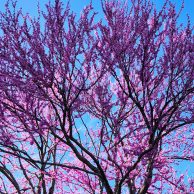 The fields and the foothills are turning green! So many trees are blooming or beginning to leaf out! There is so much energy bursting forth everywhere I look! After the lovely rain last weekend we emerged from our Sunday class to be greeted by the singing of frogs in a big puddle in the parking lot! How can they develop that fast???
The fields and the foothills are turning green! So many trees are blooming or beginning to leaf out! There is so much energy bursting forth everywhere I look! After the lovely rain last weekend we emerged from our Sunday class to be greeted by the singing of frogs in a big puddle in the parking lot! How can they develop that fast???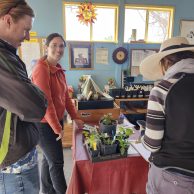
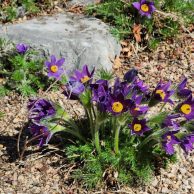
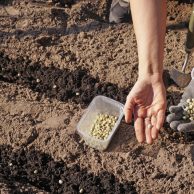 March is bringing us a characteristic tilt of the see-saw that this month always brings. Tank tops can go back in the drawer for a little while, as this week we will see night-time temperatures dipping into the mid-20s. We are expecting rain (~1.6 inches in Boulder, ~3 inches in Denver!), and heavy, wet snow, too. We’ve been here before; no need to panic. And we need the moisture!
March is bringing us a characteristic tilt of the see-saw that this month always brings. Tank tops can go back in the drawer for a little while, as this week we will see night-time temperatures dipping into the mid-20s. We are expecting rain (~1.6 inches in Boulder, ~3 inches in Denver!), and heavy, wet snow, too. We’ve been here before; no need to panic. And we need the moisture!